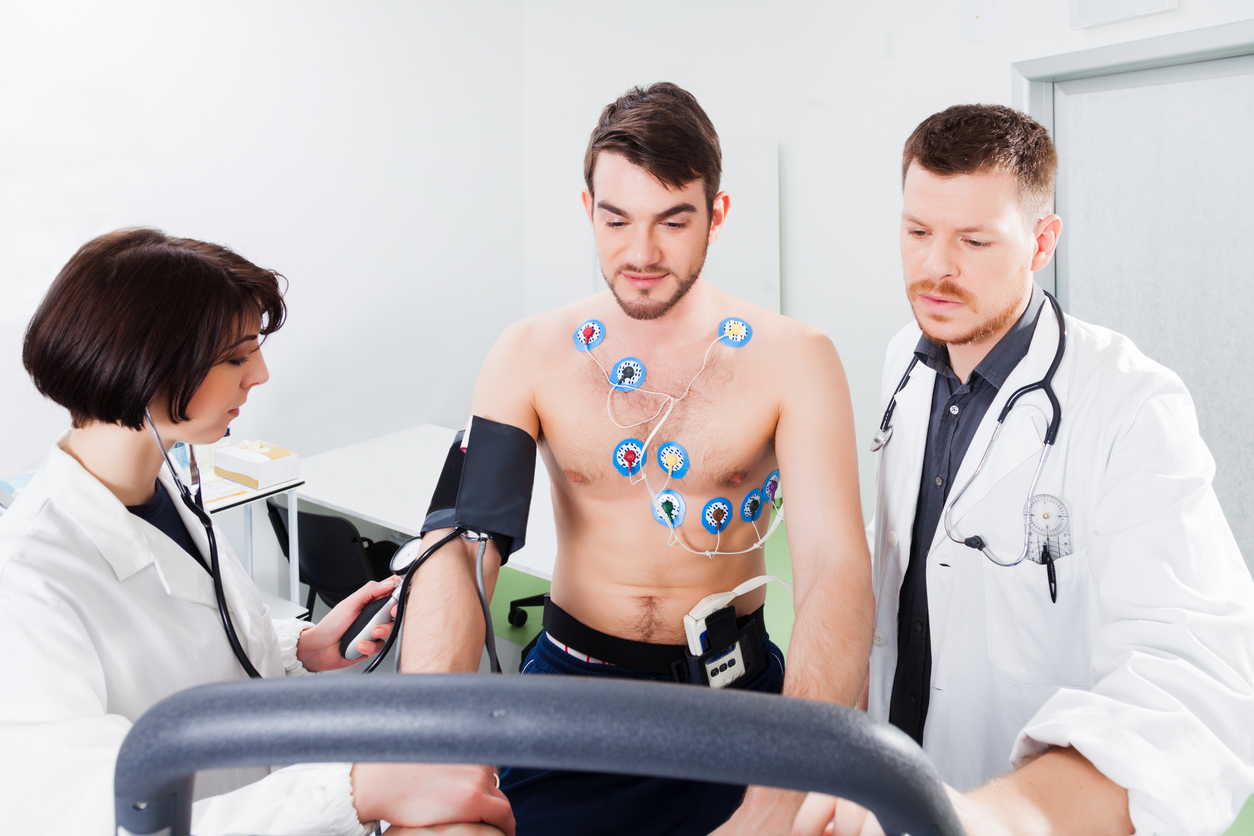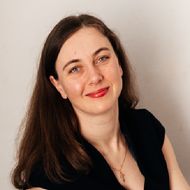'The Branch of Medicine That Our Developments Primarily Target Is Cardiology'

The application of mathematical models to the diagnosis and treatment of cardiovascular diseases contributes to the effective detection of patient predispositions and supports the selection of best treatment strategies. The use of mathematical models helps create new diagnostic tools and train neural networks to assist clinicians. Researchers from HSE University and colleagues from Saratov State Medical University are engaged in this work as part of the Mirror Laboratories project. In this interview, Natalya Stankevich, Senior Research Fellow at the International Laboratory of Dynamical Systems and Applications of the HSE Campus in Nizhny Novgorod, talks about what the collaboration has achieved so far.
Natalya Stankevich is the leader of the project 'Mathematical and Radiophysical Modelling of the Complex Dynamics of Living Systems for the Development of Methods for Analysing Experimental Data' carried out by the laboratory in collaboration with Saratov State Medical University (SSMU).
— How did the idea come about to create a Mirror Laboratory for interdisciplinary research and the application of mathematical models in medicine?
— The initiative came from HSE University, which has been hosting Mirror Laboratories project contests since 2020. At our laboratory, we were seeking to engage in applied work and welcomed the opportunity to collaborate with medical professionals and radiophysicists, combining our research to achieve new results through the integration of basic science with clinical and experimental studies.
— Which mathematical models have proven most applicable in medicine?
— There are numerous models based on different principles. Some represent abstract mathematical equations whose solutions produce signals which resemble, for instance, a typical ECG waveform. Some models are based on the physiological processes of the cardiovascular system. Others are hybrid models, where an abstract, mathematically simple model is enhanced with elements that reflect the physical system. Each of these models has its own area of application; some provide strictly mathematical results that can later be adapted to more physiologically accurate models.
Our partners have extensive experience in this field. The mathematical model they have been developing for many years describes the dynamics of autonomous cardiovascular regulation and captures the fundamental heart rhythm. The model comprises four main parts: two representing the autonomic nervous system, one regulating mean arterial pressure, and one accounting for the influence of respiration on these processes. The model features a large number of parameters (over 40), some of which our colleagues have derived from experimental data. It accurately replicates the dynamics of the human cardiovascular system.
Through our collaboration, we aim to identify which parameters are most important and could lead to changes in the cardiovascular system that are critical to patient health.
Building on previous work, our colleagues are now developing new, more realistic models of the human cardiovascular system. They are compiling an experimental database on the system’s specific nuances and creating sets of equations to capture effects that reflect individual health characteristics.

— In what areas of medicine and for which diseases are these developed models applied?
— The primary branch of medicine that our developments target is, of course, cardiology. This includes a wide range of cardiovascular diseases, such as chronic heart failure, hypertension, coronary heart disease, and others. There are also research areas and objectives focused on more narrow but related fields, such as psychology, sleep medicine, and sports medicine.
The models developed by our colleagues at SSMU make it possible to simulate various states of the cardiovascular system in healthy individuals, such as wakefulness, sleep, and physical activity. They also identified a set of parameters corresponding to arrhythmia, hypertensive crises, and vegetative blockade. Our partners have established a standard set of parameters through their analysis of experimental data, including ECG, blood pressure, and photoplethysmograms. (Photoplethysmography, or PPG, is a method for studying peripheral hemodynamics by measuring blood volume changes in the capillaries using red and infrared light directed at the skin—Ed.)
— How is this work organised?
— Our colleagues at the Cardiology Research Institute work at both the University Clinical Hospital of Saratov State Medical University and the Regional Clinical Cardiology Dispensary. They have access to a large volume of experimental data and conduct surveys of patients and medical professionals. Some of our colleagues are practicing cardiologists themselves. There is also a large archive of data accumulated over the years, which can be reprocessed and analysed in light of new hypotheses. One of our partners' most important developments is a method for calculating the phase synchronisation coefficient between components of the cardiovascular and respiratory systems. Using ECG and PPG analysis, they identify segments in the time series where synchronisation occurs. In 2024, our colleagues from SSMU analysed approximately 900 ECG recordings from patients with various cardiovascular diseases and calculated this coefficient, which effectively distinguishes healthy individuals from those with pathology.
Our team at HSE University is currently studying the conditions under which phase synchronisation occurs, ie we are developing the theoretical foundations explaining the emergence of phase synchronisation intervals. In the future, this theoretical model could help us understand what factors increase or decrease the duration of synchronisation intervals. It may also enable the development of modified models that generate data characteristic of patients with pathology, create realistic simulations, and produce surrogate data for machine learning—ultimately leading to devices that will assist doctors in routine tasks.
In addition to working with cardiovascular patients, our colleagues analyse data and develop models for healthy individuals under various conditions. Currently, experimental data is being collected by recording an electrocardiogram (ECG) at rest, followed by physical activity; then, after a brief rest (during which the heart rate typically recovers within a minute) a final ECG recording is taken. We subsequently process the data using the developed models to analyse how quickly the subject recovers, and we calculate indicators that characterise the complexity and randomness of the signal. Our partners from SSMU have shown that a healthy cardiovascular system exhibits a heart rate with natural randomness, while reduced randomness indicates disruption in rhythm regulation and may signal the presence of disease. Perhaps in the future, our clinical colleagues will be able to draw new insights from this data.

— How is your interaction going?
— Our key partner is Saratov State Medical University, and some project participants are physicists and radiophysicists who have built close contacts with medical professionals through many years of collaboration. While dedicating significant time to applied topics, we also aim to establish a solid theoretical foundation, advance dynamical systems theory, and apply its concepts to inspire new clinical experiments.
We are now in the third year of the project, and our medical partners have started proposing new objectives and designing experiments that we could validate through model-based calculations.
— How important is fundamental mathematics for creating models applicable to medicine?
— We are developing methods to verify the reliability and accuracy of our calculations. As part of one of the project’s objectives, we calculate the largest Lyapunov exponent, which indicates the presence of chaotic behaviour in the system. A positive value signifies that the system is functioning chaotically.
In the context of this objective, the main problem is to determine the nature of the non-periodicity in ECG signals. An open question remains: are we observing a periodic regime disrupted by noise, or is the cardiovascular system inherently governed by complex dynamics, with chaos as a fundamental property?
When calculating the Lyapunov exponent, a persistent challenge has been to distinguish between the contributions of noise and the intrinsic chaotic behaviour of the dynamical system. We applied statistical methods to propose a way to assess the contribution of noise and its role in the dynamical system. We were able to demonstrate that overall, the system’s dynamics are chaotic, which is an inherent property of the dynamical system itself. Noise affects the system, and depending on its characteristics, it can disrupt the structure of the chaotic attractor. That is why we need models that account for all these factors and enable us to assess their impact on the dynamic indicator.
Another objective that we are pursuing with our partners is studying the dynamics of cardiomyocytes, or heart muscle cells. Among them are typical cells that only contract, and atypical ones that transmit impulse signals and behave like neurons, functioning based on the Hodgkin–Huxley principle. We are investigating the idea that multistability in cardiomyocytes may predispose individuals to various arrhythmias. At this stage, we are using a relatively simple model to study scenarios involving the development and disruption of multistability. This study is important not only for medical applications but also for advancing bioimplants and tissue engineering—where damaged areas of heart tissue that fail to send proper signals, leading to arrhythmia, can be recreated or replaced.
— What fundamental mathematical problems are you aiming to solve?
— It would be ideal if we could rigorously prove the existence of a chaotic attractor in a model of the human cardiovascular system. However, this is quite challenging for a realistic model. We are working to illustrate some classic bifurcation scenarios that lead to the development of chaos. Demonstrating the development and evolution of chaos in stages, based on a physiologically sound model, would provide strong evidence that a certain model exhibits genuine chaotic behaviour—an important factor in addressing a number of medical problems as well.

Olga Posnenkova, Head of the Atherosclerosis and Chronic Coronary Heart Disease Department of the Research Institute of Cardiology at SSMU
— In recent years, we have made significant progress toward creating and using comprehensive digital twins of individual physiological systems that accurately mimic the processes in both healthy individuals and patients with various diseases. Digital twins are models that enable the prediction of a system’s response to specific impacts under controlled conditions—such as changes in operating parameters or the effect of drugs with different mechanisms of action.
Our collaboration with HSE University through the Mirror Laboratories project enables us to apply mathematical methods to study dynamic processes in the human cardiovascular system, compare results with existing data, and further improve the digital model of circulatory regulation. Mathematics experts broaden our understanding of how to analyse traditionally recorded biological signals, help us identify what information can be extracted from the chaotic components of cardiovascular signals, and determine how to manage health based on these insights. We hope that together we can advance into the field of translational medicine, where the results of basic research find application in real clinical practice.
The Mirror Laboratories format has proven to be an effective mechanism for collaboration. The regular exchange of expertise throughout several years of the project has enabled us to build an interdisciplinary team of like-minded individuals. We have not only expanded our knowledge in mathematical modelling but also learned to understand each other, find common ground, and lay the foundation for long-term collaboration focused on advancing our joint developments.
See also:
Scientists Test Asymmetry Between Matter and Antimatter
An international team, including scientists from HSE University, has collected and analysed data from dozens of experiments on charm mixing—the process in which an unstable charm meson oscillates between its particle and antiparticle states. These oscillations were observed only four times per thousand decays, fully consistent with the predictions of the Standard Model. This indicates that no signs of new physics have yet been detected in these processes, and if unknown particles do exist, they are likely too heavy to be observed with current equipment. The paper has been published in Physical Review D.
HSE Scientists Reveal What Drives Public Trust in Science
Researchers at HSE ISSEK have analysed the level of trust in scientific knowledge in Russian society and the factors shaping attitudes and perceptions. It was found that trust in science depends more on everyday experience, social expectations, and the perceived promises of science than on objective knowledge. The article has been published in Universe of Russia.
HSE and UTM Present Results of Mirror Laboratory's Work at Russian–Malaysian Commission
HSE University–St Petersburg and the Universiti Teknologi Malaysia (UTM) presented the results of two years of work and a development roadmap for the mirror laboratory on social entrepreneurship. The document outlines the strategy for global transformation in the business and digital innovation sphere.
Institute for Robotics Systems Established at HSE University
As decided by the HSE University Academic Council, a new Institute for Robotics Systems will be established at HSE, and with a strong fundamental base. It will cooperate with relevant departments across the university and engage students and doctoral candidates in research and development (R&D). First Vice Rector of HSE University and Director of the Institute for Statistical Studies and Economics of Knowledge, Leonid Gokhberg, discussed the expected practical results and the framework for cooperation with an industrial partner.
IDLab: Fascinating Research, Tough Deadlines, and Academic Drive
The International Laboratory of Intangible-driven Economy (IDLab) was established at the HSE campus in Perm 11 years ago. Its expertise in data processing and analysis allows researchers to combine fundamental studies with applied projects, including the development of risk and cybersecurity models for Sber. The head of the laboratory, Professor Petr Parshakov, and Senior Research Fellow Professor Mariya Molodchik spoke to the HSE News Service about IDLab’s work.
HSE Lecturers Awarded Yandex ML Prize 2025
The Yandex ML Prize is awarded to lecturers and heads of educational programmes who contribute to the development of artificial intelligence in Russia. This year, 10 laureates were selected from 300 applicants, including three members of the HSE Faculty of Computer Science (FCS). A special Hall of Fame award was also presented for contributions to the establishment of machine learning as an academic field. One of the recipients was Dmitry Vetrov, Research Professor at the HSE FCS.
HSE Tops Ranking of Universities Participating in Priority 2030 Programme
The Russian Ministry of Science and Higher Education has published an updated list of participants in the Priority 2030 programme. A total of 106 universities will receive support this year. HSE University was included in the first group and topped the ranking.
'We View Mathematics as a Universal Language for Natural Sciences, Economics, and Computer Science'
The Laboratory for Geometric Algebra and Applications at the HSE Faculty of Economic Sciences is developing a universal language for mathematics, physics, and other exact and natural sciences. It is creating computational methods that are applied in geometry, physics, machine learning, engineering, computer science, and other fields. The laboratory’s staff, including doctoral students, have published numerous articles in leading scientific journals and have taken part in major international conferences. Dmitry Shirokov, Head of the Laboratory, spoke with the HSE News Service about their work.
HSE University and Banking and Finance Academy of Uzbekistan Sign Memorandum on Scientific Cooperation
The partnership aims to foster academic collaboration in the fields of global economics, sustainable development, and Islamic finance. Strengthening academic ties with Uzbekistan represents a promising direction for scientific exchanges and the implementation of international projects in sustainable development.
HSE Psycholinguists Launch Digital Tool to Spot Dyslexia in Children
Specialists from HSE University's Centre for Language and Brain have introduced LexiMetr, a new digital tool for diagnosing dyslexia in primary school students. This is the first standardised application in Russia that enables fast and reliable assessment of children’s reading skills to identify dyslexia or the risk of developing it. The application is available on the RuStore platform and runs on Android tablets.



